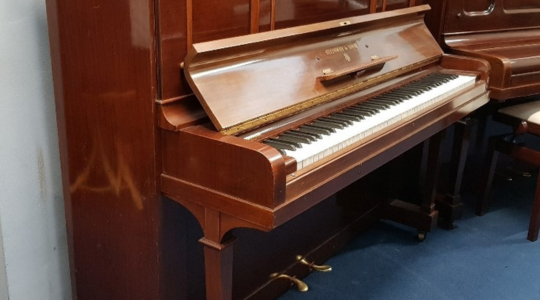
Introduction
If you haven’t got room for a grand piano, then there are certain good makes of upright piano which stand head and shoulders above the rest. The tables below shows the best common uprights available in the UK, placed in order of their quality. We’ve listed uprights which tuners and performers regard as the best, taking into account tone, touch and appearance.
There are hundreds of makes of upright pianos and we have only listed the top quality used and new ones you’re most likely to find. If you are interested in purchasing or selling a make not listed, please e-mail with details. Our “common makes” pages have a list of all the common makes available and a rating of each make.
Are you tall? Is there enough leg room?
Leg room on pianos varies in height from 58 -70cm (Measure your leg from floor to top of knee!). Grands and small modern uprights are usually about 62cm from the floor to the under side of the keyboard. With grands, this can be increased by about 3cm by using glass castor cups; the angle of the pedals may then need adapting as these are raised up too. (A Yamaha U3 upright has leg room of 62cm whereas a German Steingraeber 118 and many Kawai and Feurich uprights have 70cm and an older Blüthner 65cm. A small modern Zender has only 58.5cm!)
Do you need book holders?
If you use thick music books, then a couple of book holders can be fitted. Older uprights usually have them, but modern ones and grands usually don’t. Most serious musicians require them.
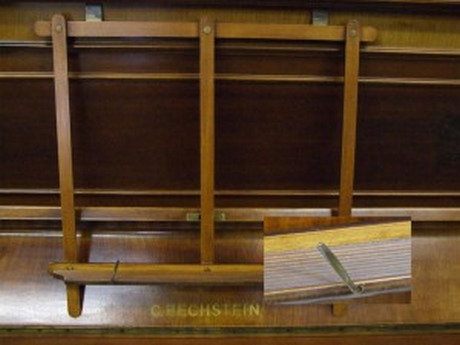
Bechstein upright pianos
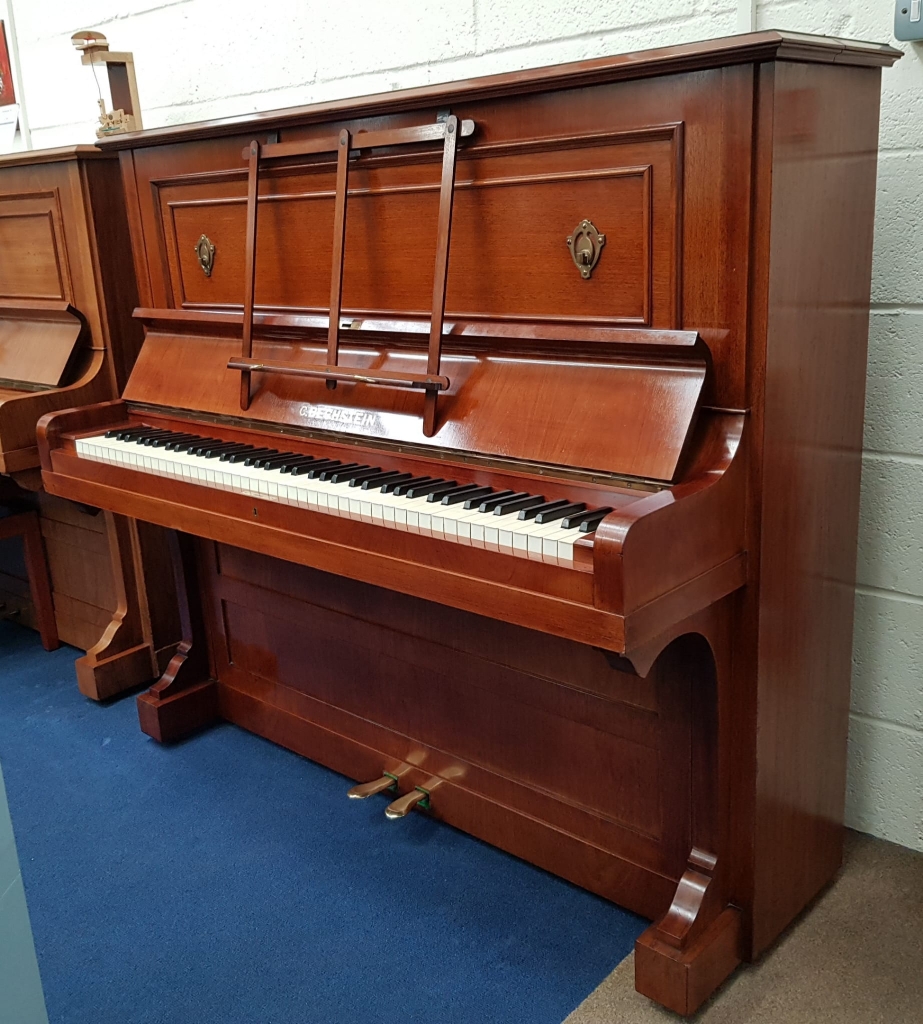
There is a broad variety in Bechstein upright pianos, so it’s hard to generalise on prices. We deal mostly in models 10, 9 and 8. Model V (5) and IV also very common and often have an attractive inlay, but models I to V suffer a lot from loose tuning pins and will therefore need repining and often a new pin-block. Bechstein 8′s are normally found in black, rosewood or mahogany and have a rich tone but the action can be difficult to set up. Overall Bechstein 8’s are good all-round uprights with a serious rich tone. The much more common model 10 has a sweet singing tone with a longer tenor string than the overstrung model 9, which is generally good but often suffers from an unbalaned bass/tenor break point; this is a problem overcome by the straight strung model 10. See Bechstein page for more details.
Model 7’s are excellent but rare. Model 6’s is rarer still.
Knight upright pianos
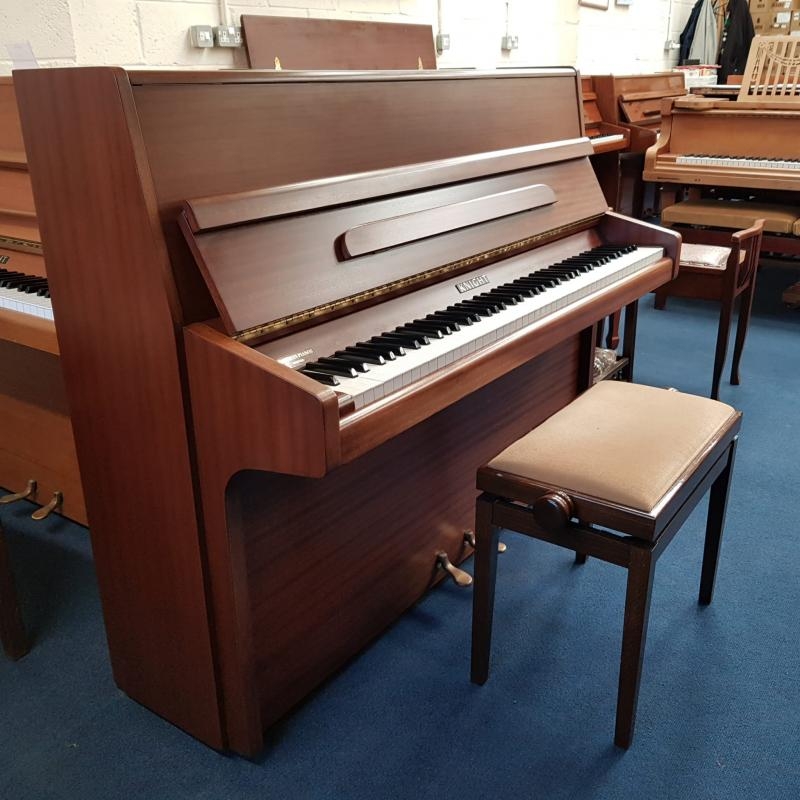
Knight pianos are normally found in mahogany, sometimes walnut or teak. They are commonly a teacher’s favourite for the fact they’re made with great integrity and have an excellent touch and full singing tone. Older knights (pre 1950) are more varied in quality and often very worn. Post 1989 Knight pianos changed their original manufacturing design and as a result are inferior in tone. So the best period is between 1950 and 1989.
Knight models
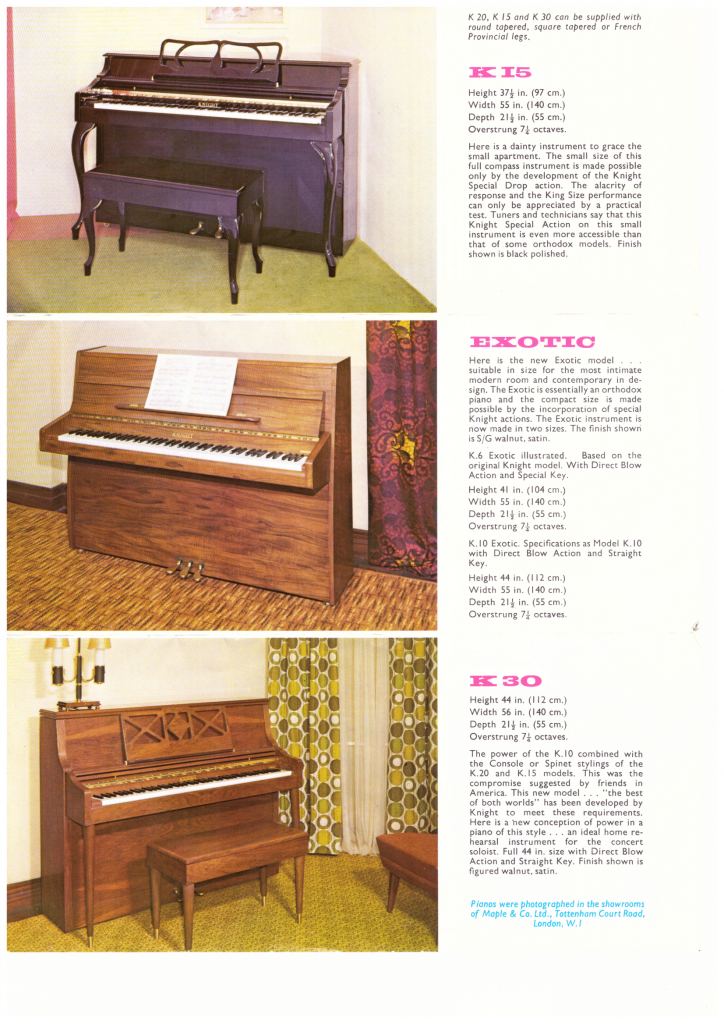
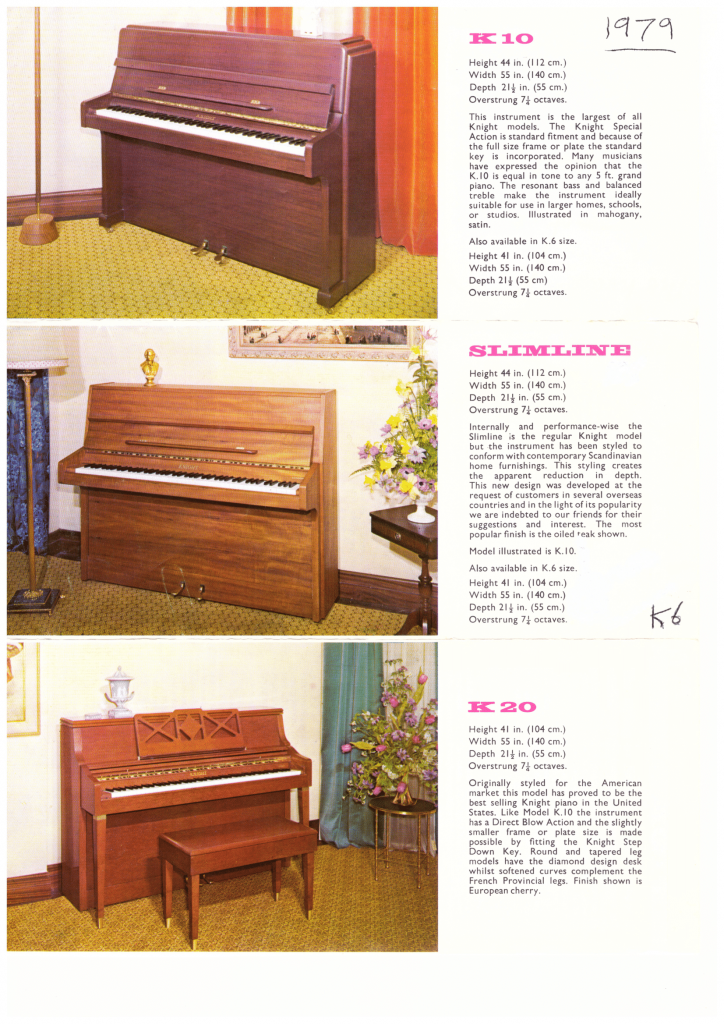
Modern English and European upright pianos (2017)
| Make | Model | Height | Year | Un-Restored | Restored |
|---|---|---|---|---|---|
| Knight | K-10 | 112cm | 1960-1988 | £500-£1000 | £1700-£3800 |
| Knight | K-20 | 110cm | 1960-1988 | £500-£1000 | £1700-£3500 |
| Welmar | Modern Style | 104-121cm | 1955-1995 | £300-£1200 | £2000-£4500 |

